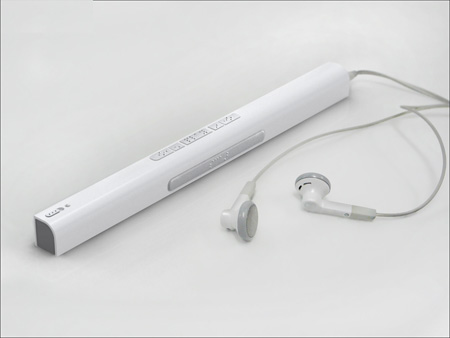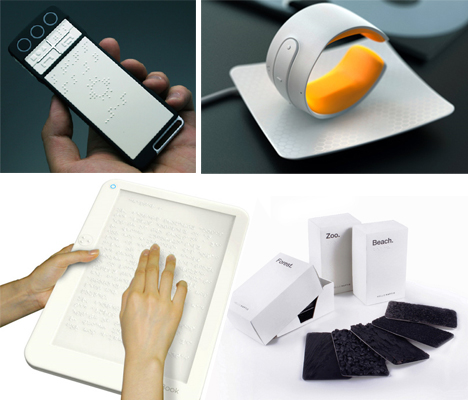Enhance Accessibility with Braille Devices and Notetakers
Enhance Accessibility with Braille Devices and Notetakers
Blog Article
Discover Innovative Tools Developed for the Aesthetically Impaired
The development of innovative tools for the aesthetically impaired stands for a substantial improvement in access and self-reliance. Technologies such as clever glasses with AI abilities and mobile applications designed to provide acoustic descriptions are reshaping daily experiences for customers.
Smart Glasses for Navigating

Smart glasses made for navigating are revolutionizing the method aesthetically damaged individuals interact with their atmosphere. These sophisticated tools use a combination of electronic camera technology, artificial intelligence, and acoustic comments to provide real-time details concerning surroundings. By using obstacle discovery systems, smart glasses can signal users to possible hazards, making it possible for more secure movement in both familiar and strange settings.
The assimilation of GPS innovation further improves navigation capabilities, enabling individuals to get auditory directions as they move. This hands-free strategy not just promotes independence however additionally equips aesthetically impaired individuals to browse urban landscapes with enhanced confidence. Additionally, numerous clever glasses are outfitted with features that recognize landmarks and road signs, providing contextual info that boosts the customer experience.
Moreover, the advancement of these gadgets is continuously advancing, with firms working to boost the precision of item recognition and increase the variety of navigational attributes. As clever glasses come to be a lot more obtainable and affordable, they hold the prospective to dramatically transform every day life for visually impaired individuals. Inevitably, these innovative devices represent a crucial action toward inclusivity, offering boosted flexibility and a higher feeling of freedom for people browsing the world around them.

Mobile Application for Daily Living
Exactly how can mobile applications enhance the every day lives of visually impaired people? Mobile applications are transforming the way aesthetically impaired users browse their environments, take care of everyday tasks, and gain access to details. These applications supply necessary support with different functionalities, cultivating self-reliance and improving lifestyle.
A number of cutting-edge mobile apps are designed specifically for everyday living. Apps like Be My Eyes link aesthetically damaged individuals with sighted volunteers via video calls, permitting them to obtain real-time aid with tasks such as reviewing tags or navigating unknown rooms. Likewise, Seeing AI, established by Microsoft, utilizes expert system to describe surroundings, checked out text, and identify items, efficiently transforming a smart device right into an effective tool for daily assistance.
Additionally, navigating apps customized for the aesthetically damaged, such as Aira and BlindSquare, use audio-based instructions and ecological information, enabling users to traverse their environments securely and confidently. Past navigating and prompt support, mobile apps also support company and job management, with functions that aid individuals set reminders, create to-do checklists, and track visits. In recap, mobile applications function as crucial resources, empowering aesthetically damaged individuals to lead more independent and fulfilling lives.
Wearable Technologies for Aid
Empowerment with innovation is progressively obvious in the realm of wearable tools made to assist aesthetically impaired people. These innovative devices incorporate flawlessly into day-to-day live, enhancing navigation and providing essential feedback to users. For circumstances, wise glasses equipped with video cameras can read and recognize faces text out loud, allowing customers to engage even more confidently in professional and social setups.
One more noteworthy innovation is making use of haptic responses systems in wearable devices. These systems utilize resonances or various other responsive signals to convey info about the user's atmosphere, such as challenges or modifications in surface, enhancing mobility and safety. Wearable innovations likewise consist of wristbands that connect to smartphones, alerting individuals to alerts with refined vibrations, hence improving connection without reliance on aesthetic signs.
As these modern technologies continue to develop, they are not only enhancing independence for visually impaired individuals however likewise fostering a better feeling of inclusion in society. By linking the gap between obstacles faced in everyday living and the potential for freedom, wearable modern technologies work as critical devices in the pursuit for equal rights and empowerment for those with visual problems.
Audio Description Devices
Audio summary tools play a vital function in boosting access for aesthetically impaired individuals, offering them with the capacity to involve with aesthetic media. Screen readers for the blind. These tools use narrated descriptions of key aesthetic aspects in movies, tv programs, and live performances, making sure that individuals can fully understand the context you could try these out and emotions conveyed through visuals
Sound description can be integrated into different systems, consisting of streaming solutions, movie theater testings, and live theater. Many prominent streaming solutions now include audio summary as an accessibility feature, allowing customers to choose it easily. Along with conventional media, specialized applications also exist, offering audio descriptions for art events, galleries, and other cultural events.
The performance of audio description rests on the ability of the narrators, that must convey aesthetic details succinctly without interfering with the initial audio. Technologies in this area are also leading the way for more link personalized experiences, where customers can readjust the degree of detail and pacing according to their choices.
Braille Innovations and Devices
Braille developments and gadgets have dramatically transformed the method visually impaired individuals engage with text and details. Modern developments have led to the growth of versatile devices that improve literacy and freedom among individuals.
In addition, mobile Braille notetakers integrate conventional Braille input with contemporary performances, assisting in note-taking, scheduling, and document editing on the go. AI-powered visual aids. These compact gadgets frequently feature text-to-speech capacities, bridging the void in between Braille and acoustic details
In addition, innovative Braille printers have actually emerged, enabling users to produce Braille labels, records, and educational products successfully. This availability cultivates higher participation in educational and specialist settings, ultimately promoting inclusivity.
In addition, study into clever Braille innovations remains to broaden. Instruments that include fabricated intelligence are being explored to offer real-time navigating assistance and contextual details, enhancing the user experience in diverse setups. On the whole, these innovations show a commitment to encouraging aesthetically damaged individuals with modern technology, ensuring they can conveniently access and engage with the world around them.

Final Thought
The development of cutting-edge devices for the aesthetically damaged considerably improves self-reliance and high quality of life. Smart glasses, mobile applications, wearable technologies, audio description devices, and Braille innovations jointly empower individuals by supplying crucial navigation help, environmental recognition, and enhanced analysis experiences. These innovations not only foster better inclusion but likewise advertise freedom in day-to-day tasks, inevitably adding to an extra easily accessible and equitable society for aesthetically damaged people. Proceeded growth in this field holds assurance for further enhancements.
As smart glasses end up being much more easily accessible and budget friendly, they hold the possible to dramatically browse around these guys change everyday life for aesthetically damaged individuals. Mobile apps are changing the way aesthetically impaired customers browse their atmospheres, manage day-to-day tasks, and access details. Applications like Be My Eyes connect visually damaged individuals with sighted volunteers by means of video clip telephone calls, permitting them to obtain real-time assistance with tasks such as checking out labels or navigating unknown rooms.Furthermore, navigation apps customized for the visually impaired, such as Aira and BlindSquare, use audio-based directions and ecological details, making it possible for individuals to traverse their environments securely and with confidence.The development of innovative tools for the visually damaged substantially improves freedom and high quality of life.
Report this page